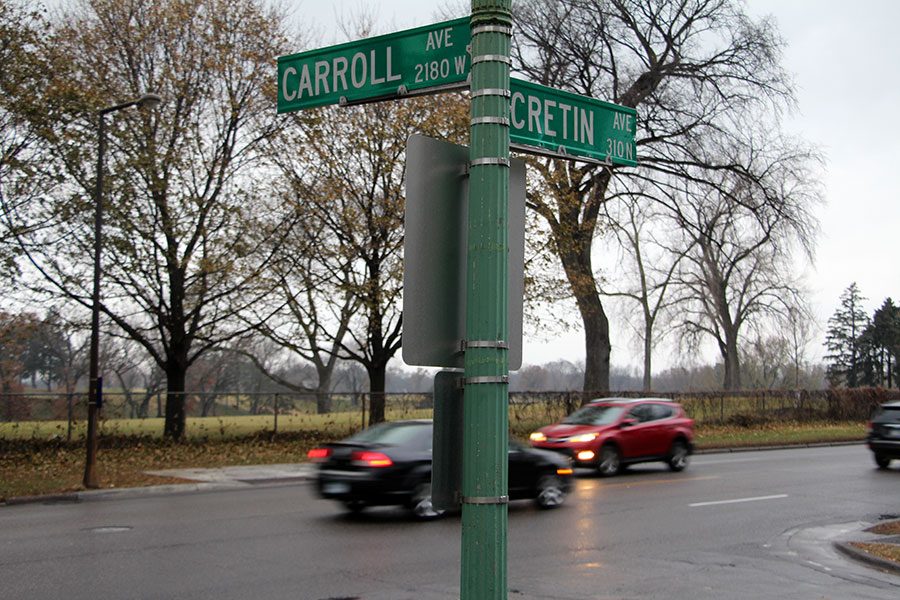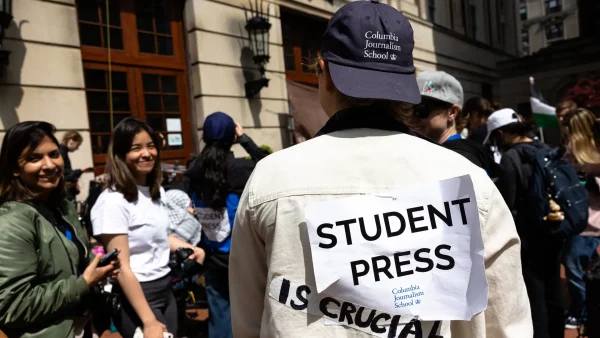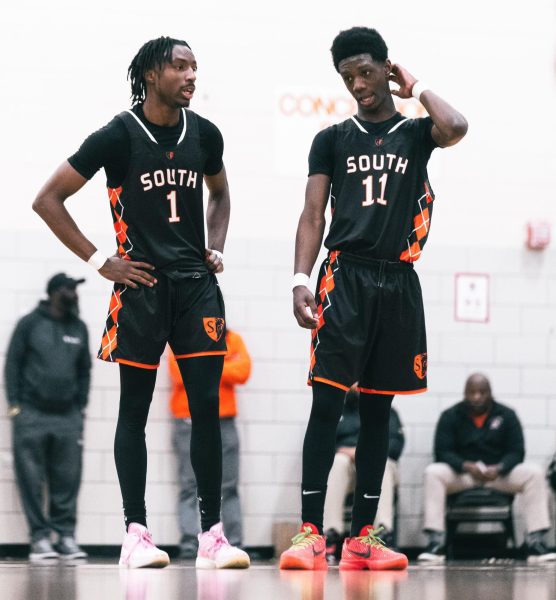Recent events mean reassessing driver and pedestrian safety
Freshman Trevion Freeman was hit on this corner of Carroll and Cretin in St. Paul Minnesota. At night, this is both a very busy and very dark intersection, making it very hard for both driver’s and pedestrians to see. Although there is still a long road to recovery for Tre, his mother Shaquetta Kennedy is hoping he will use this incident to activate change in the Twin Cities.
You’re finally 15 and eligible to take driver’s education! You can’t wait to be zooming down the road, the wind whipping in your hair, the sounds of the cities all around you. But before you step in the car, remember there are lots of responsibilities that come with driving. In light of recent events affecting the South community, many people are taking a look at our city and community and what we could be doing better.
Recently, South High freshman Trevion Freeman was hit by a truck while getting off the city bus at Cretin and Carroll Avenue in St. Paul. He has gone through a long recovery process, from being critically injured, to the Intensive Care Unit, to the neuroscience unit, and now to the rehabilitation unit with his expected release date being December 15th. His mother, Shaquetta Kennedy explained that the process has been, “long and it’s been a struggle, we’ve been having our ups and downs, but we just get through it and try to stay strong.”
For the future, Kennedy explained that going forward, “we are working with South High School and Public Relations and we plan on working with Gillette Children’s [hospital] Public Relations. [Trevion] plans on giving a few speeches about his experiences.” She is hopeful for the future for her son, and wants friends and classmates know,”be safe in the road and when getting off on dark streets and Trevion will be back at South High School soon.” She is looking forward to Freeman using the incident to activate change in the Twin Cities. This accident brings light to car safety and the concerns surrounding pedestrians and traffic.
According to the Star Tribune, the “Twin Cities as the 166th most congested city in the world and 48th in the United States. Drivers here spend an extra 21 minutes a day or 81 hours a year on the roads.” In addition to that, according to cdc.gov in 2015, 5,376 pedestrians were killed in traffic crashes in the United States. This averages to one crash-related pedestrian death every 1.6 hours. Obviously pedestrian related crashes are a major problem.
In addition to all the things going on outside the car, you also have to worry about safety and keeping your eyes on the road. It’s enough to make someone nervous before you even set your hands on the wheel. Kaiya Woller, a junior explained, ”I get nervous about hitting pedestrians or crashing on the highway. People get seriously injured by those types of things and it’s scary.” Anna Mulhern, a senior explained she gets nervous because of, “crazy drivers who are drunk and on their phones.” Owen Guindon, a sophomore explained, “Driving is a very trusting thing. Whether you know it or not, your life is in everybody’s hands once you get behind the wheel.”
One of the main ways students learn the rules of the road is through driver’s education at locations like AAA, Ace Driving School, Barts Suburban Driving School, Alamo Driving School, and even classes at South or community centers in the cities. The classes taken at South or other community centers are quite common for young drivers as well as affordable, usually ranging from $100-$130, versus other driving schools that are at least $150 for just the class. Richard Stallings, the driver’s education teacher at South explains the class as a place where students,“learn the rules of the road and also past the permit test. We also learn about railroad and truck safety.”
Stallings also teaches about some of the concerns he has on the road. His concerns are, “[students] sometimes misjudge stopping distance, number of passengers in the car. Driver distraction, things that keep a driver’s eyes off the road.” One of the main reasons for this concern is a rule that for the first six months of having your license, you can only have one passenger under 18 in your car at a time, which many students do not follow.
He also explained that driving is mostly based on attitude, “the main thing is driver’s attitude, driving is more than anything an attitude. Some drivers have good skills but they don’t have good attitude. [Students] let little things that shouldn’t bother them bother them. If a person cuts them off or something, which happens a lot while they are driving, they take that on, and you really should be cool in that situation.”
Another major concern for student drivers is people who drive under the influence of drugs or alcohol. “It’s stupid to drive under the influence,” Woller explained,” people can’t even walk straight when drunk so why drive a car? Just call an Uber.”
Guindon feels like accident while under the influence are all preventable. “It’s a matter of being safe and being in the mindset of ‘hey, I’m getting behind the wheel to take control of a 4,000 pound hunk of metal’ rather than ‘eh it’s whatever’. Mulhern also expressed anger over driving under the influence,“I hope they are okay but it also makes me pretty angry especially if they were doing something easily avoidable that was just a lapse of judgement because it’s not worth anyone’s if you want to respond to a text or drink.”
Stallings chose to teach driver’s education because,“…it’s worthwhile– I’ve taught adults and it’s really something to see an adult person to go from not being able to drive a car to having a license… I can look at what I’ve put into that and then see the output, it’s rewarding to see a person be able to drive.”
With present cars and an unpredictable future, it’s hard to say what will become of driver’s education as well as behind the wheel. According to bbc.com,”The automobile in 2050 will be self-driving” mean that driving will become but safer and more efficient, which means we won’t be stuck in traffic as often. Also technology will have a major influence on car, bbc.com notes,”we can assume that everything that has a digital representation will be available in our cars. The automobile seems to be the final frontier for the digital lifestyle – some people want to be disconnected while driving – but in decades to come it will be completely connected and – hopefully – safe to use.”
According to consumerreports.org, the older the car, the more of a risk of fatality comes with it. If a vehicle is eight to eleven years old, it is only 19 percent worse, driving one four to seven years old is only 10 percent worse, than drivers in semi-new, zero to three year old cars.
For Stallings, he is unsure what will happen to the driver’s education teaching position in the future explaining,“It could be a position that is no longer needed. If the cars can drive themselves, they don’t need anyone to teach them…. We don’t know what the future is going to bring but the students will still need to know the rules of the road and it’s a good idea for them to take driver’s ed to learn them.” In this age of self driving cars, Stallings finds it important to still have driver’s education for safety purposes. Guindon agrees,”I think it’s still going to be best if we have driver’s training and classes. You can’t always depend on technology to do your job for you.”

Cece Kaufmann is enjoying her first year at the Southerner and is someone who's always prepared to jump over any hurdles that get in her way. This sophomore...

Eli Shimanski, a senior, is ready as ever for this year, as long as he’s always listening to the album Views by Drake. Our very own visual media editor...










